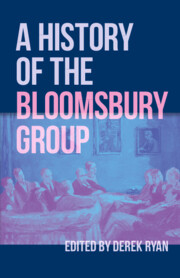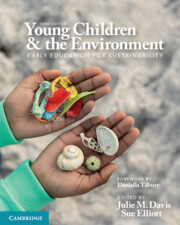Refine search
Actions for selected content:
199 results

A History of the Bloomsbury Group
-
- Published online:
- 09 October 2025
- Print publication:
- 23 October 2025
7 - Political Legitimacy: From the National to the International
- from Part III - The Question of Legitimacy at the International Level
-
- Book:
- The Law and Politics of International Legitimacy
- Published online:
- 14 July 2025
- Print publication:
- 24 July 2025, pp 101-120
-
- Chapter
- Export citation
Universal in Scope and Appeal? The Politics of ‘National’ vs ‘International’ Opera at Post-war Covent Garden
-
- Journal:
- Transactions of the Royal Historical Society , First View
- Published online by Cambridge University Press:
- 07 July 2025, pp. 1-24
-
- Article
-
- You have access
- Open access
- HTML
- Export citation
Romantic racism: A reassessment of Carl Gustav Carus’s writings on race and human inequality
-
- Journal:
- Medical History / Volume 69 / Issue 2 / April 2025
- Published online by Cambridge University Press:
- 15 May 2025, pp. 218-233
-
- Article
-
- You have access
- Open access
- HTML
- Export citation
7 - Influencing People Around the Globe
- from II - Persuasion and (New) Contexts of Use
-
-
- Book:
- Manipulation, Influence and Deception
- Published online:
- 10 June 2025
- Print publication:
- 24 April 2025, pp 135-154
-
- Chapter
- Export citation
Celebrating 30 years of the international network of agencies for health technology assessment (INAHTA)
-
- Journal:
- International Journal of Technology Assessment in Health Care / Volume 41 / Issue 1 / 2025
- Published online by Cambridge University Press:
- 03 February 2025, e7
-
- Article
-
- You have access
- Open access
- HTML
- Export citation
1 - The Woman Question and Interwar Japan’s International Engagements
-
- Book:
- Geographies of Gender
- Published online:
- 09 January 2025
- Print publication:
- 23 January 2025, pp 37-76
-
- Chapter
- Export citation
Chapter 5 - The British Novel of Ideas in an International Context
- from Part II - 1900–1945
-
-
- Book:
- The British Novel of Ideas
- Published online:
- 05 December 2024
- Print publication:
- 12 December 2024, pp 99-119
-
- Chapter
- Export citation
Designing collaborations involving health technology assessment: discussions and recommendations from the 2024 health technology assessment international global policy forum
- Part of
-
- Journal:
- International Journal of Technology Assessment in Health Care / Volume 40 / Issue 1 / 2024
- Published online by Cambridge University Press:
- 04 November 2024, e41
-
- Article
-
- You have access
- Open access
- HTML
- Export citation
15 - International Perspectives on Gender, Sexual, and Affectional Diversity
- from Part IV - New Directions in LGBTQ+ Affirmative Counseling
-
-
- Book:
- LGBTQ+ Affirmative Counseling
- Published online:
- 31 October 2024
- Print publication:
- 04 July 2024, pp 271-293
-
- Chapter
- Export citation
Chapter 31 - Weltliteratur (World Literature)
- from Part V - World Cultures Inspiration and Reception
-
-
- Book:
- Goethe in Context
- Published online:
- 16 May 2024
- Print publication:
- 23 May 2024, pp 301-310
-
- Chapter
- Export citation
5 - Airport and Arrival
- from Part II - Essential Signs
-
- Book:
- Chinese Signs
- Published online:
- 29 February 2024
- Print publication:
- 07 March 2024, pp 45-50
-
- Chapter
- Export citation
11 - Keynes and International Trade Politics after the First World War
-
-
- Book:
- Keynes's <i>Economic Consequences of the Peace</i> after 100 Years
- Published online:
- 14 December 2023
- Print publication:
- 25 January 2024, pp 280-299
-
- Chapter
- Export citation
5 - Challenging Knowledge
-
- Book:
- Academic Freedom and the Transnational Production of Knowledge
- Published online:
- 04 January 2024
- Print publication:
- 25 January 2024, pp 91-111
-
- Chapter
-
- You have access
- Open access
- HTML
- Export citation

Young Children and the Environment
- Early Education for Sustainability
-
- Published online:
- 05 January 2024
- Print publication:
- 05 January 2024
-
- Textbook
- Export citation
6 - Practical possibilities and pedagogical approaches in early childhood education for sustainability
- from Part 1
-
-
- Book:
- Young Children and the Environment
- Published online:
- 05 January 2024
- Print publication:
- 05 January 2024, pp 120-142
-
- Chapter
- Export citation
Introduction
-
-
- Book:
- Young Children and the Environment
- Published online:
- 05 January 2024
- Print publication:
- 05 January 2024, pp 1-4
-
- Chapter
- Export citation
9 - Harnessing children’s interest in digital technologies for sustainability learning
- from Part 1
-
-
- Book:
- Young Children and the Environment
- Published online:
- 05 January 2024
- Print publication:
- 05 January 2024, pp 189-209
-
- Chapter
- Export citation
12 - How preschool education in Sweden contributes to cultures for sustainability
- from Part 2
-
-
- Book:
- Young Children and the Environment
- Published online:
- 05 January 2024
- Print publication:
- 05 January 2024, pp 255-273
-
- Chapter
- Export citation
11 - Early learning for sustainability through STEAM
- from Part 1
-
-
- Book:
- Young Children and the Environment
- Published online:
- 05 January 2024
- Print publication:
- 05 January 2024, pp 234-252
-
- Chapter
- Export citation
